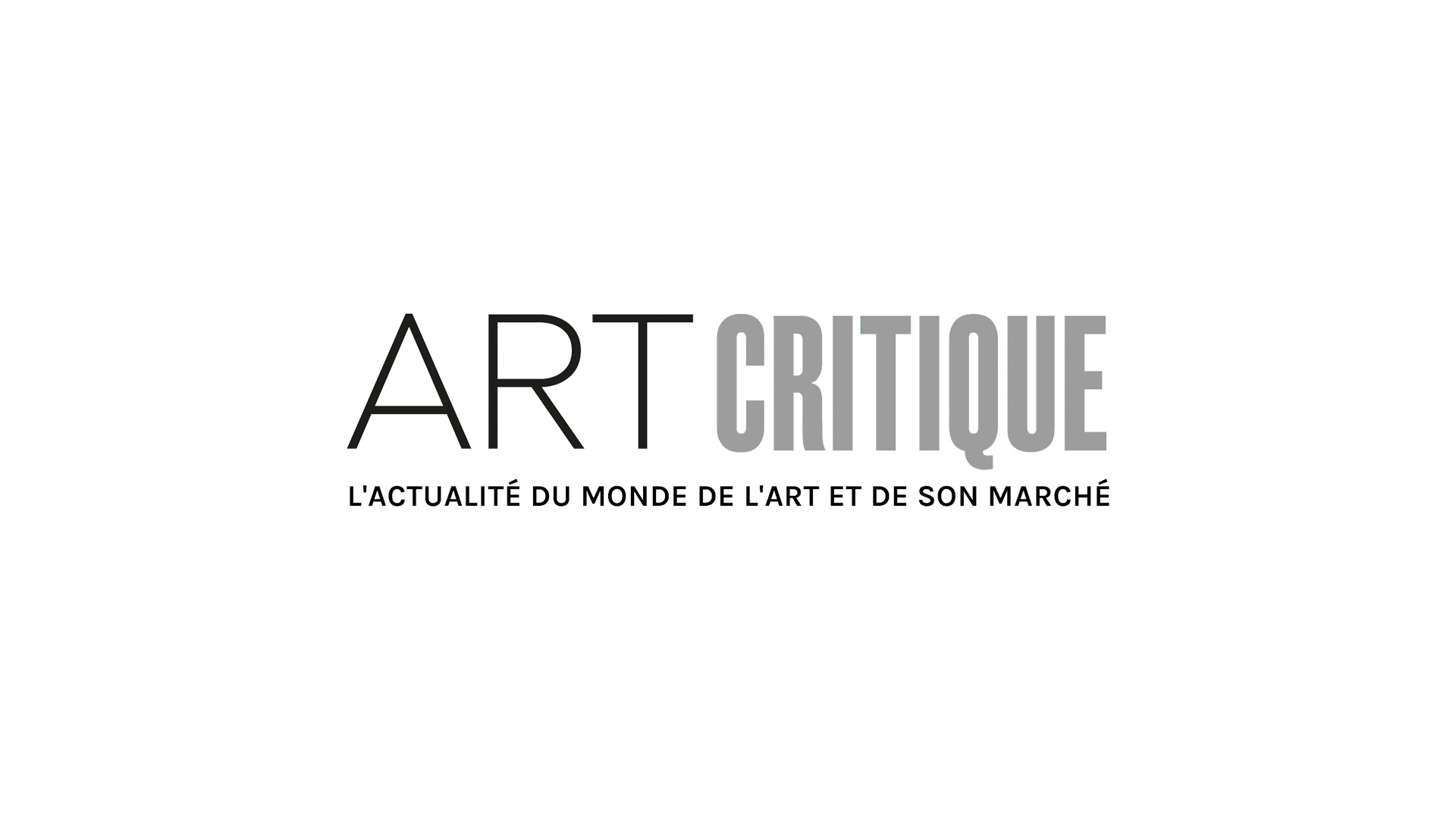American artist Ron English is best known for his interesting fission of Pop art, propaganda, and art history. Having coined the term ‘popaganda,’ his paintings, sculptures, and even billboards are intentionally shocking, but fit neatly within his artistic vocabulary. From his psychedelic Lifesize lil Bigfoot Figure to MC Supersized, an obese fast food chain mascot featured in the 2004 documentary Supersize Me, English’s works are highly thought-provoking, commenting on society as we know it.
So, when English purchased Banksy’s Slave Labour (2012) on November 15th at Julien’s Auctions in Los Angeles for $730,000, it seemed natural that the ‘popagandist’ would seek out the work of a notorious street artist. What is unusual—even shocking—is what English plans to do with the now valuable mural. English intends to hang up the artwork in his house—but not before he whitewashes over the famous image of a boy kneeling at a sewing machine with a string of plastic bunting bearing the Union Jack.
Slave Labour, found on the outer wall of a North London Poundland shop in 2012, it is thought to have been Banksy’s protest against sweatshops supported through the overwhelming sale of souvenirs during the London Olympics. Like Banksy, English himself now intends to protest the sale of street art with his planned whitewashing.
‘I’m going to paint over it and just include it in one of the walls in my house,’ English told Press Associate. ‘We’re tired of people stealing our stuff off the streets and re-selling it so I’m just going to buy everything I can get my hands on and whitewash it.’ English sees the buying and selling of street art as a ‘blow’ to the genre and argued that his intention to paint over Slave Labour is meant as a boon for ‘his good pal Banksy,’ whom English purportedly spent time with in Palestine.
Banksy might appreciate English’s destruction of his piece after all, given that the street artist has his own long history of controversial acts: in fact, English’s announcement comes just weeks after Banksy shredded one of his own works, Girl With Balloon (2006), moments after it sold for $1.2 million (£1.4 million). After the shredding, Banksy’s authenticating body, Pest Control, certified the partially shredded piece as a brand-new artwork, titling it Love is in the Bin (2018). The anonymous buyer went ahead with the purchase, stating that she grew to appreciate the work after the performance.
English poked fun of this instance where destroying a work actually increased its value, quipping that after he paints over Slave Labour, ‘then of course I’ll sell the whitewash painting for a million dollars. I’m crazy but I’m not stupid.’ Despite their countercultural bent, clearly both English and Banksy recognize the money-making potential of such stunts.
Banksy and English are not the first artists to erase or alter artworks. Their particular focus on the relationship between street art and the auction house, however, creates an intriguing dialogue between the way art should be handled.





